On this page you will find information on the:
Abandoned Pets, Binturong, Muskrat, Rabbit, Raccoon.
Abandoned Pets:
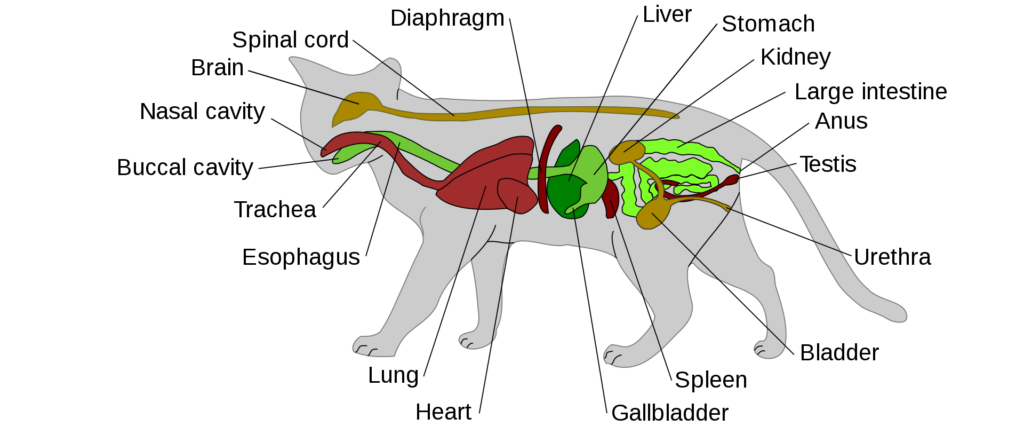
Unfortunately, house cats (Felis catus) and dogs (Canis lupus familiaris) occasionally get dumped off on the Greenway by uncaring owners who imagine the animal’s instincts will allow it to survive, though the pet is probably used to eating from a food bowl. Instead it will likely slowly starve to death or meet some other kind of unseemly, premature end. Chances are slim it will be picked up by a kindly, humane person.
The animal shelter in Laplace can be reached at (985) 651-7387 and the one in Hammond at (985) 543-0215.
See: http://www.huffingtonpost.com/2013/01/30/domestic-cats-kill-billions-mice-birds-annually-study_n_2575833.html
Binturong:
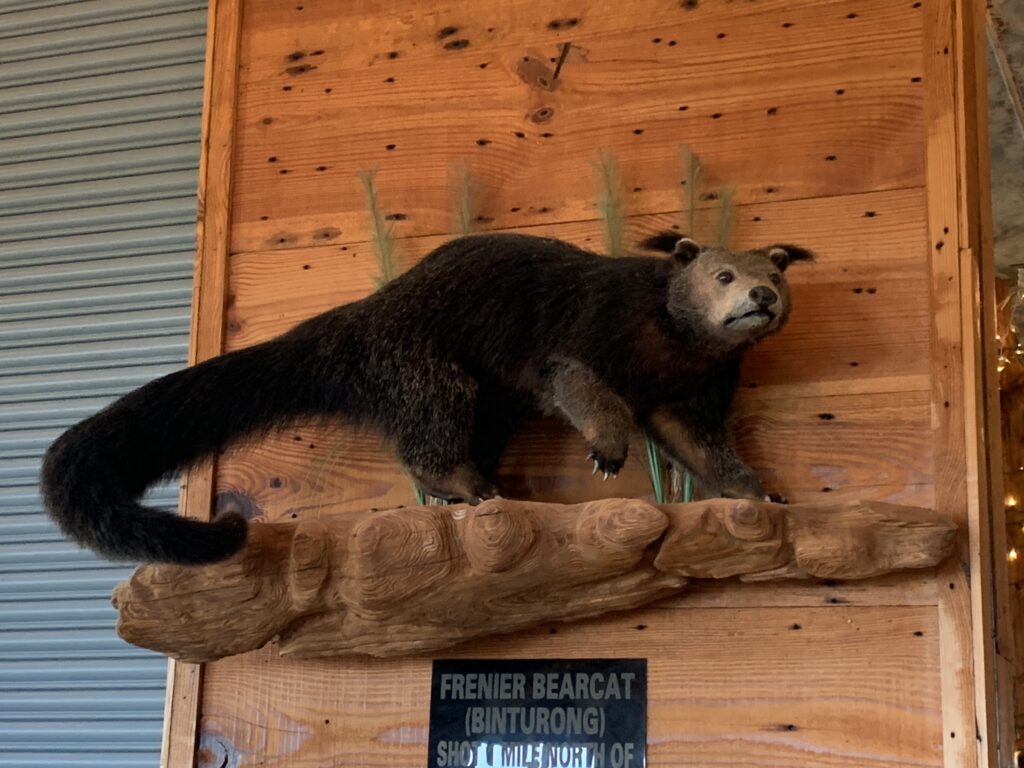
At Frenier Landing on Peavine Rd. off the Manchac Greenway is a highly unusual Southeast Asian Binturong (Arctictis binturong), stuffed, mounted and gazing down from a dining room wall. These creatures are also known as “Bearcats” and look a little like a cross between a badger, a weasel and a Teddy bear. According to the accompanying plaque this hapless individual had somehow made it to freedom in the local swamps, which happen to be almost exactly like its native habitat. It was probably happily hustling about in our swamp, minding its own business and munching on the local small critters until someone saw fit to shoot him. Sometimes it doesn’t pay to stand out and be different.
Muskrat:
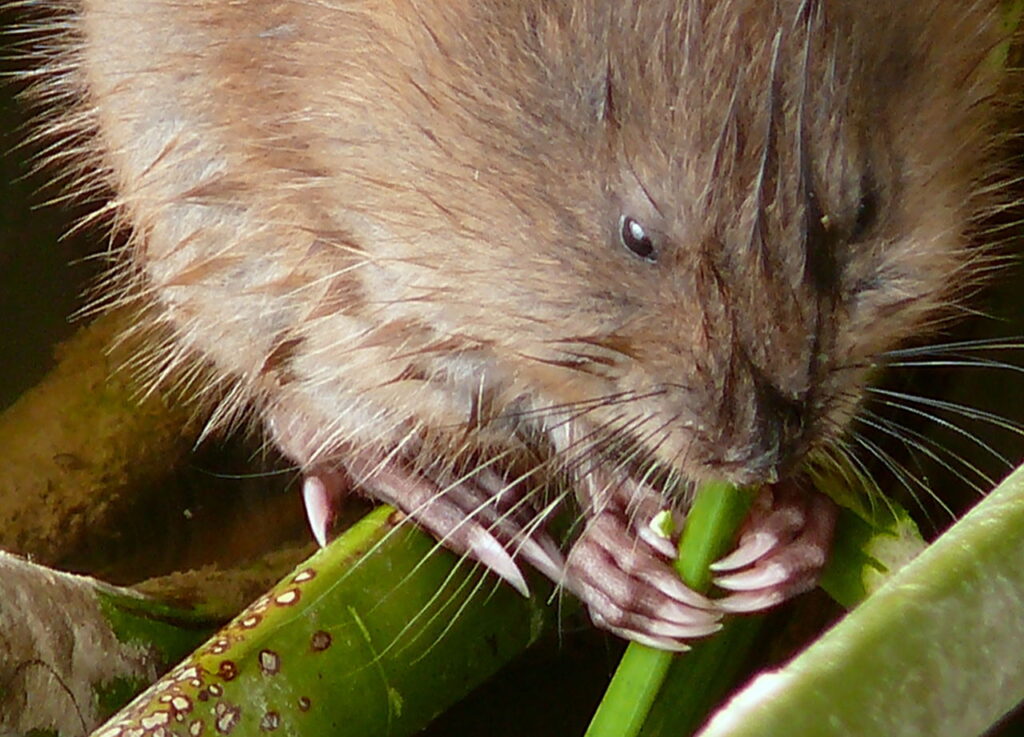
Muskrats are found all across North America but the Louisiana Muskrat (Ordatra rivalicia, a.k.a. “marsh hare”) is a distinct species, occurring only in this state’s coastal marshes. They’re found as far north as the Tangipahoa Parish wetlands on either side of the Manchac Greenway. They spend most of their time out in this marsh, minding their own business, eating and committing “muskrat love” by reproducing and tending to their nests. Sometimes they are seen attempting to cross the Greenway, with varying degrees of success.
The state’s fur industry once couldn’t get enough of them, so they imported the Nutria from Argentina and turned the new creature loose. The foreigner out-ate and out-reproduced the native to the point where the state now has to offer $4.00 for the dismembered tail of the invader in an effort to control them.
Now, about this musk. Though Elon is on everyone’s mind these days, the name is for a smelly substance excreted by glands found near the privates of several mammal species including the subject rodent. Believe it or not, those crazy guys in the perfume industry use these excretions as a base in their concoctions because they think the ladies would love it.
Rabbit:

Eastern Cottontails (Sylvilagus floridanus) are the most popular brand of rabbit across the nation, including the dryer parts of our swamp. They hide in the brush all day and come out at dawn and dusk to nibble on the vegetation. (Animals only active at these times are called “crepuscular;” try laying that on your Momma.) Their big, round eyes shine like buttons and give them a look of perpetual surprise, or paranoia. They should be for they are everybody’s foodstuff – eagles, owls, foxes, bobcats, coyotes, bears, hawks and humans hunt them. Even semi-pro predators like raccoons, dogs, cats, mink, skunks, snakes and ‘possums prefer to find and eat the tender young nestlings (called “kits”). About half of these wild rabbits die this way each year and many more succumb to automobiles, diseases, parasites and shotguns. On average, they live only 15 months.
To make up for it, they live it up while they’re alive, eating and breeding constantly. Momma Rabbit starts breeding as a juvenile and has a half-dozen or so kits a half-dozen or so times a year and nature provides a steady buffet of leaves, stems, twigs, small branches, bark, fruit, buds, flowers, seeds, sedge, clover, grasses and weeds.
Raccoon:
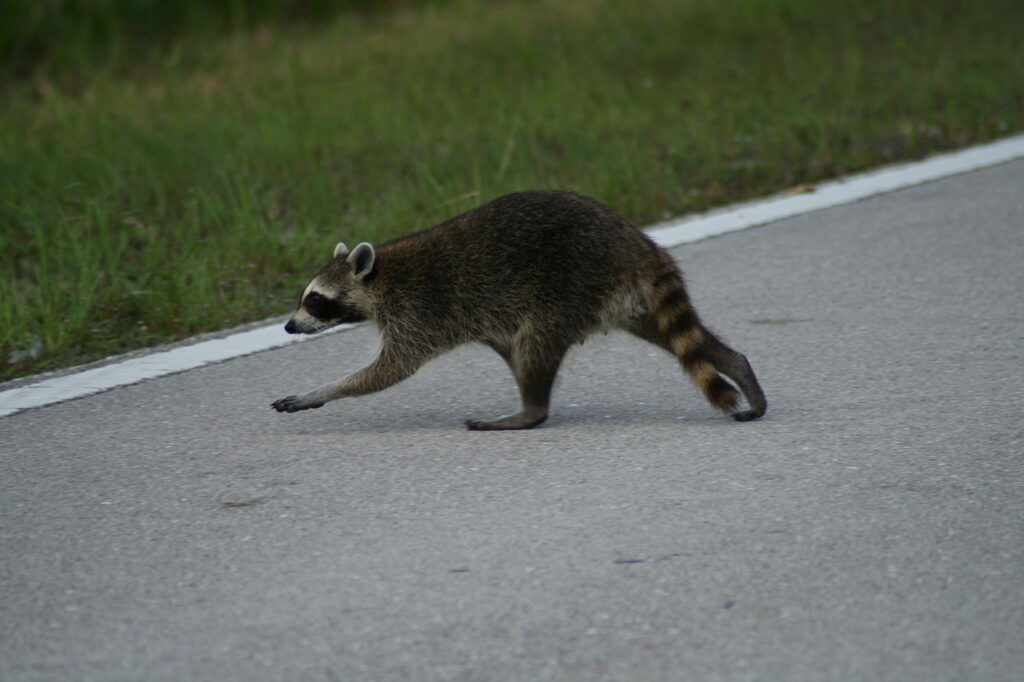
The Raccoon (Procyon lotor) is the Rodney Dangerfield of the mammal world, they’re “tragicomic.” They’re comedic with their antics, agile hands, cantankerousness and silly looking mask. Tragic because they “don’t get no respect,” they’re set upon by everyone and everything – the harsh outdoors, mosquitoes, a constant hunt for food, diseases, run-ins with shotguns and automobiles, plus they are someone else’s food, coyotes love ‘em.
Though they’re sometimes seen strutting around in broad daylight they are usually secretive at night like Ninjas, skulking around, rifling trash cans and hustling pet food bowls in town or padding up and down the river bank out in the swamp, rustling up little squirmy things to eat and washing them with their fidgety paws.
Nutria Rat:
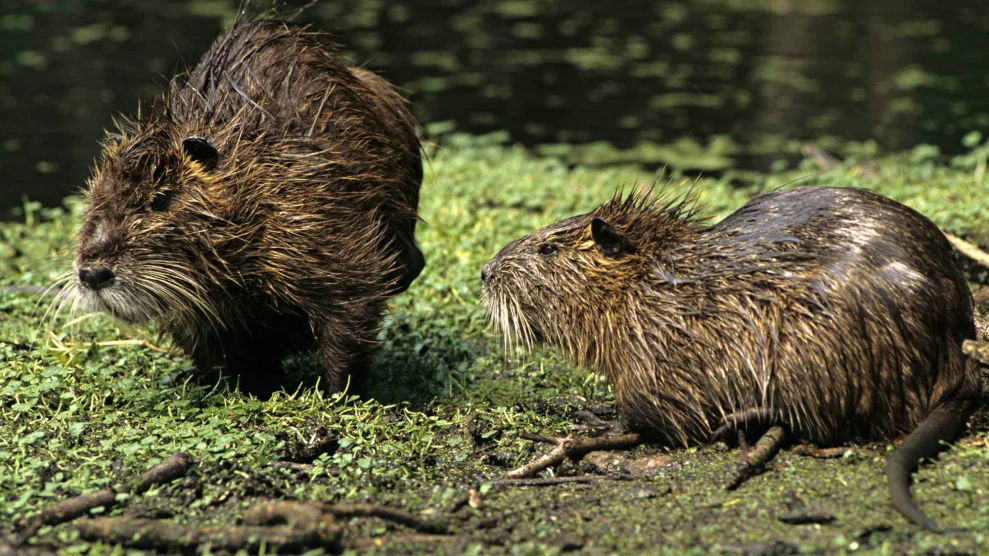
In the first decades of the last century, land managers and property owners in Louisiana’s coastal zone sought to boost fur production on their property by importing Myocastor coypus from Argentina. Boy, was that a mistake. The big rodent began to over-reproduce and spread across the coast, competing with and displacing native muskrat and, in some cases, actually denuding extensive areas of marsh. Now the state has to offer a $5.00 per-nutria tail bounty in an attempt to control them. At the same time, for a number of reasons, the demand for fur has fallen dramatically. Rats.
